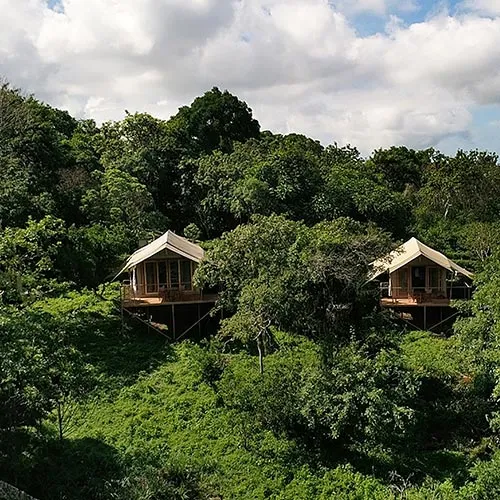Galapagos in June: At a glance
Air temperature: 29-27°C / 67-80°F
Sea temperature: 20-23°C / 68-74°C
Average rainfall: 0.6 – 1.3cm / 0.25-0.5in
Clear skies: 2-4 hours
Intermittent rain showers
Wind force: 4-7
Underwater visibility: approx 5-20m
Lush, green vegetation
What are the Galapagos Islands like in June?
This is a month of transition, when the dry and wet seasons meet, producing a fluctuating, if unpredictable climate. June in the Galapagos archipelago brings the best of the dry and wet seasons together; pleasant days are balanced by cooling waters, lush landscapes, and an abundance of wildlife.
The mist begins to descend over the highlands, marking the garua season.
Snorkeling and Scuba-Diving in the Galapagos in June
The return of the cooler Humboldt Current to the islands sparks a new level of marine life under the sea. Scuba diving can be particularly rewarding in the cooler season, with an increasing abundance of marine life. Note that sea temperatures are cooler
Galapagos Wildlife in June
The wildlife in the Galapagos is fascincating all year round, with plenty to see at any given month of the year. It is around this time of year that giant tortoises begin their annual migration to the lower, arid regions of the island. See Wildlife.
Galapagos Safari Camp in June
Located in the highlands of Santa Cruz Island, our camp has the advantage of slightly cooler air temperatures and lower levels of humidity, compared to the coast. Air conditioning is not a requirement at night.
When to Visit the Galapagos by Month
For more information on the weather and wildlife in the Galapagos, please visit When to visit the Galapagos Islands or one of our monthly guides:
January, February, March, April, May. June, July, August, September, October, November, December.
